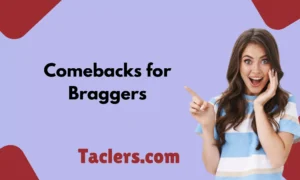In today’s fast-paced world, managing conversations and interactions with others has become a critical skill. Whether in personal relationships or professional settings, knowing how to set boundaries, redirect conversations, defuse conflicts, and encourage empathy can greatly enhance your communication effectiveness. This guide will delve into these key areas, providing you with actionable strategies and insights to handle challenging interactions with confidence.
Understanding Boundaries
Boundaries are the invisible lines that define where one person ends and another begins. They are crucial for maintaining mental and emotional well-being, helping you navigate relationships without feeling overwhelmed or compromised.
Definition and Importance
Boundaries serve as personal guidelines that protect your space, time, and energy. They help you manage how others treat you and ensure that your needs are respected. Setting clear boundaries can:
- Reduce Stress: By communicating your limits, you prevent others from overstepping, which reduces stress and anxiety.
- Enhance Relationships: Healthy boundaries foster mutual respect and understanding in relationships.
- Promote Self-Care: Boundaries allow you to prioritize your own needs and well-being.
Types of Boundaries
Understanding the different types of boundaries can help you identify and establish them more effectively. Here’s a breakdown:
- Physical Boundaries: These involve your personal space and physical touch. For example, saying “I prefer not to hug” is setting a physical boundary.
- Emotional Boundaries: These protect your feelings and emotional health. An example might be, “I need time to process my emotions before discussing this further.”
- Mental Boundaries: These pertain to your thoughts and beliefs. For instance, “I respect your opinion but prefer to make my own decisions.”
- Digital Boundaries: With the rise of digital communication, setting limits on how and when you are available online is crucial. This might involve saying, “I don’t check emails after 7 PM.”
Signs You Need Boundaries
Recognizing the need for boundaries can prevent you from becoming overwhelmed. Watch for these signs:
- Feeling Overwhelmed: If you frequently feel stressed or drained by interactions with others, it may be time to set clearer boundaries.
- Resentment: Experiencing resentment towards someone who regularly crosses your limits is a strong indicator that boundaries need to be established.
- Difficulty Saying No: Struggling to decline requests or demands from others can signal a need for stronger boundaries.
Strategies for Setting Boundaries
Setting boundaries is a skill that requires clear communication and consistency. Here are some effective strategies:
Communication is Key
Clear communication is essential when setting boundaries. Be direct and specific about your needs and limits. For example:
- Use “I” Statements: Instead of saying, “You always interrupt me,” try, “I feel frustrated when I’m interrupted during conversations.”
- Be Assertive: Communicate your boundaries confidently without being aggressive. For instance, “I need to leave work at 5 PM to attend to personal matters.”
Practical Tips for Setting Boundaries
Implement these practical tips to set and maintain boundaries effectively:
- Be Consistent: Reinforce your boundaries regularly to ensure they are respected. Consistency helps others understand and accept your limits.
- Know Your Limits: Be aware of your personal limits and communicate them clearly. This helps prevent burnout and preserves your well-being.
Handling Resistance
Sometimes, people may resist or challenge your boundaries. Here’s how to handle it:
- Stay Firm: Reiterate your boundaries calmly and firmly. For example, “I understand this is important to you, but I need to stick to my limit of not working late.”
- Reaffirm Your Boundaries: If someone continues to push, gently remind them of your limits and why they are important to you.
Redirecting Conversations

Redirecting conversations can help manage uncomfortable or unproductive discussions. Here’s how to do it effectively:
Why Redirecting is Necessary
Redirecting conversations is essential to maintain focus, manage discomfort, and steer discussions towards more productive topics. This is especially useful in both personal and professional settings.
Techniques for Redirecting Conversations
Here are some practical techniques for smoothly redirecting conversations:
- Polite Deflection: Offer a different topic or question to shift the conversation. For example, “That’s an interesting point. Have you seen the latest news on [new topic]?”
- Change the Focus: Redirect the focus to a neutral or positive subject. “I understand your concerns. Let’s talk about our upcoming project.”
- Using Humor: Light humor can ease tension and shift the conversation without causing offense. “Well, if we keep discussing this, we might need a time machine to fix it!”
- Acknowledge and Redirect: Briefly acknowledge the original topic before introducing a new one. “I hear what you’re saying. Let’s also consider how we can address [new topic].”
Example of Redirecting Conversations
Here’s an example scenario of redirecting a conversation:
Scenario: During a team meeting, a discussion about office politics becomes heated.
Redirecting Response: “I appreciate everyone’s perspectives on this. To ensure we stay on track, let’s focus on the upcoming project deadlines and how we can best meet them.”
Defusing Conflict
Handling conflict effectively is crucial for maintaining healthy relationships and productive environments. Here’s how to defuse conflicts:
Recognizing Conflict Early
Identifying early signs of conflict can help you address issues before they escalate. Watch for:
- Rising Tension: Notice changes in tone or body language that indicate growing frustration.
- Avoidance: People may start avoiding each other or avoiding certain topics, signaling underlying conflict.
Defusing Techniques
Use these techniques to defuse conflicts and restore harmony:
- Active Listening: Show empathy by listening without interrupting. Acknowledge the other person’s feelings and perspectives.
- Staying Calm: Maintain composure and avoid reacting emotionally. Take deep breaths if needed to stay centered.
- Use of Neutral Language: Avoid language that could escalate the conflict. Instead of “You’re wrong,” say “I see things differently.”
- Seeking Common Ground: Identify areas where you both agree and build on those to ease tension. “We both want what’s best for the project; let’s work together on finding a solution.”
Examples of Defusing Statements
Here are some phrases that can help defuse a conflict:
- “I understand your point of view. Let’s explore how we can find a solution that works for both of us.”
- “It seems we’re both feeling frustrated. How can we address this issue together?”
Encouraging Empathy in Conversations
Empathy plays a crucial role in managing difficult conversations and fostering understanding. Here’s how to encourage empathy:
The Role of Empathy
Empathy helps build connections and understanding by acknowledging and validating others’ feelings and perspectives. It’s vital for:
- Building Trust: Empathy fosters trust and openness in relationships.
- Resolving Conflicts: Understanding each other’s feelings can lead to more effective conflict resolution.
Ways to Encourage Empathy
Implement these strategies to promote empathy in your interactions:
- Active Empathy: Practice putting yourself in the other person’s shoes. Ask yourself how you would feel in their situation.
- Open-Ended Questions: Use questions that encourage thoughtful responses. For example, “How did this situation affect you personally?”
- Expressing Understanding: Show that you recognize and respect the other person’s feelings. “I can see why you’re upset about this issue.”
Modeling Empathy
Lead by example by demonstrating empathy in your own interactions:
- Listen Actively: Show genuine interest in what others are saying.
- Respond with Compassion: Acknowledge their feelings and offer supportive responses.
Final Thoughts
Setting boundaries, redirecting conversations, defusing conflicts, and encouraging empathy are essential skills for managing interactions effectively. By implementing these strategies, you can foster healthier relationships and navigate challenging situations with greater ease.
Recap of Key Points
- Setting Boundaries: Communicate clearly and consistently to protect your mental and emotional well-being.
- Redirecting Conversations: Use techniques like polite deflection and humor to manage uncomfortable topics.
- Defusing Conflict: Employ active listening, calmness, and neutral language to resolve disputes.
- Encouraging Empathy: Practice understanding and validating others’ feelings to build stronger connections.
Call to Action
Try applying these strategies in your daily interactions. Share your experiences or ask questions in the comments below. Your insights and feedback are valuable as we all strive to improve our communication skills.

Ethan Richards, a distinguished writer at Taclers.com, excels in blending sharp insights with engaging storytelling. His background in sociology adds depth to his analysis of human reactions, making his articles both thought-provoking and entertaining. Explore the world of reactions with Ethan and see familiar moments in a whole new light.










